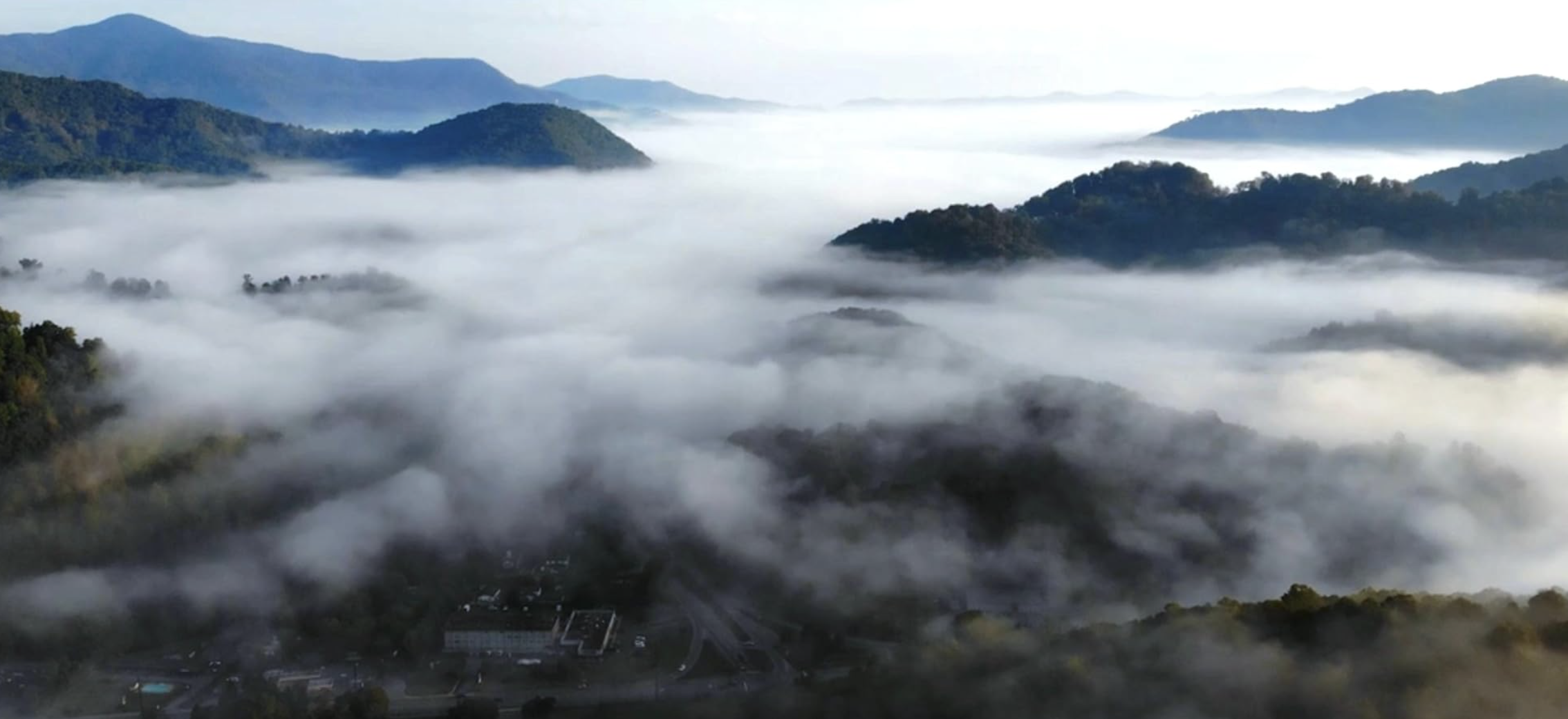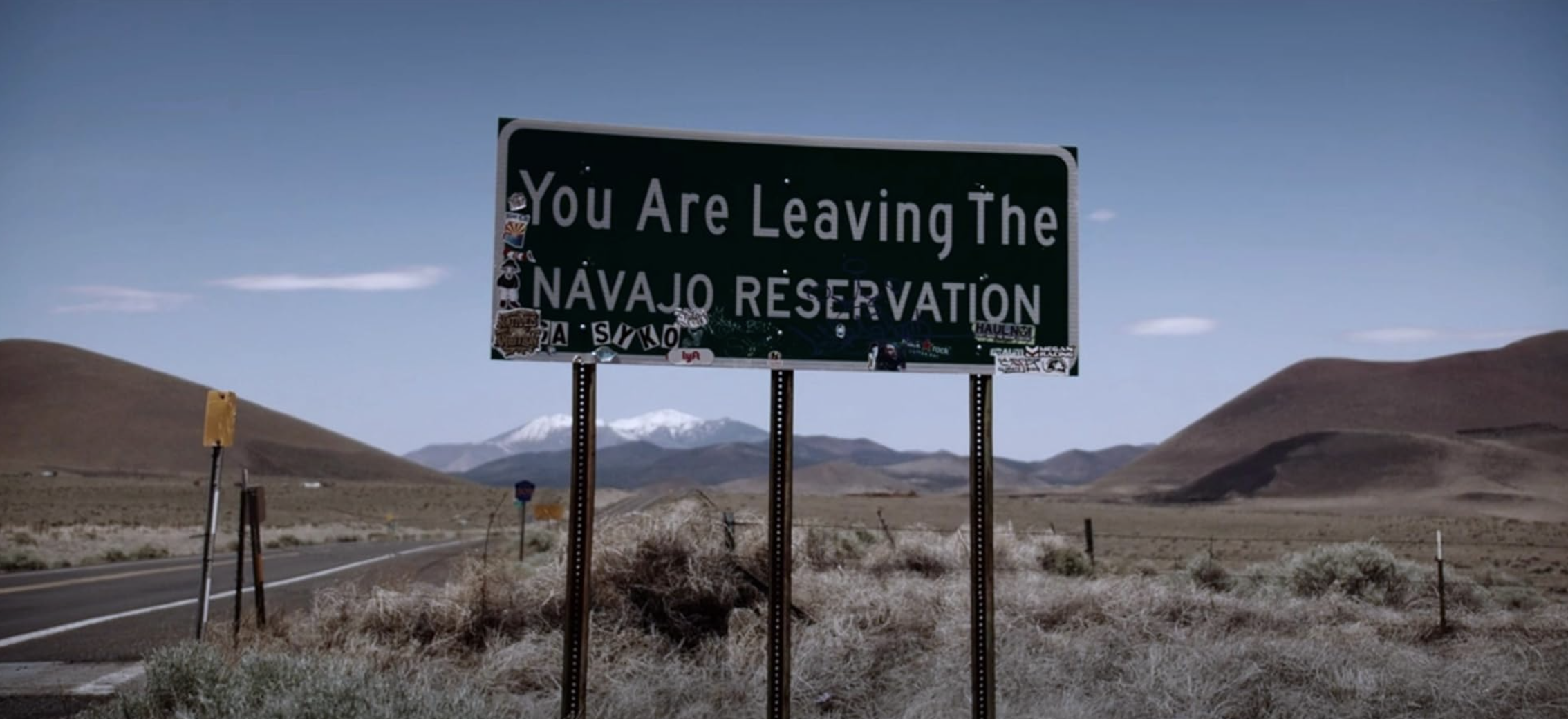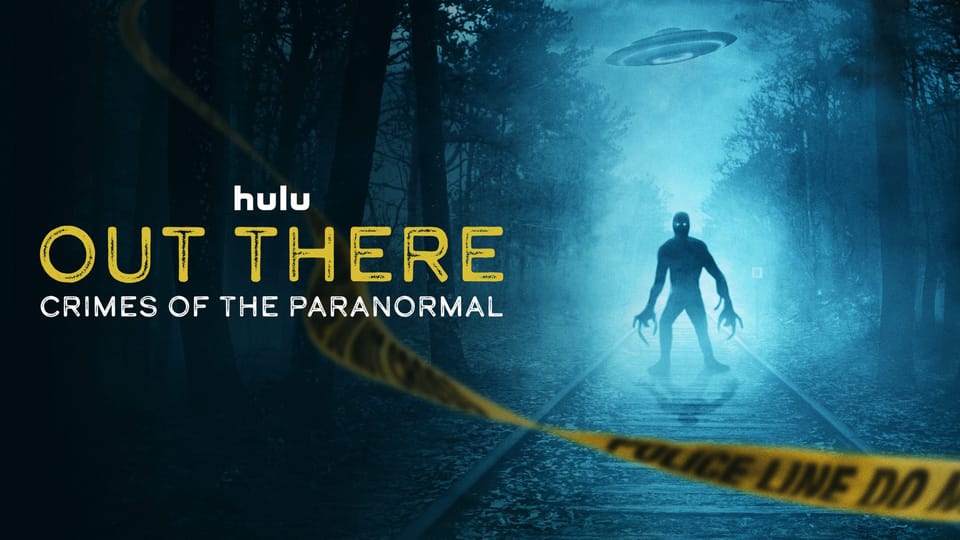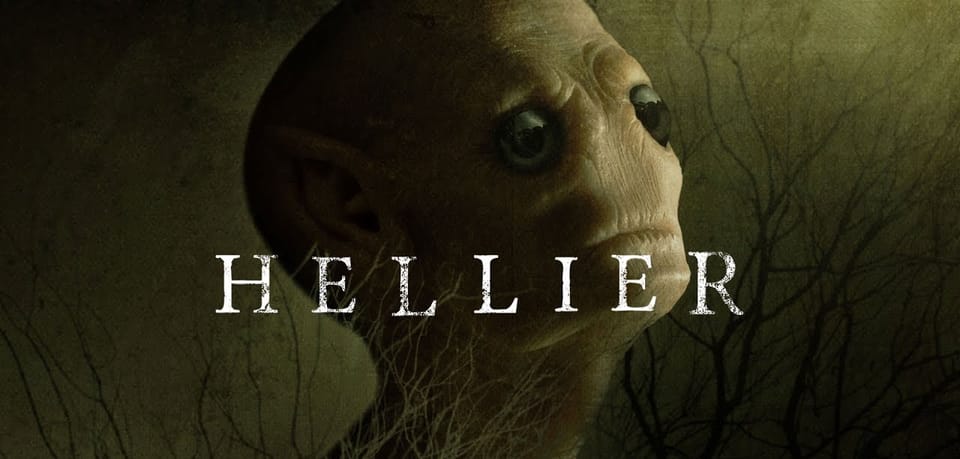My fascination with the paranormal and supernatural extends back to when I was kid. I loved reading ghost stories, urban legends, and folklore, such as the tales compiled in Scary Stories to Tell in the Dark, or watching episodes of Unsolved Mysteries and Beyond Belief: Fact or Fiction. As I grew older, that interest continued with paranormal investigation shows, such as Ghost Hunters and more recently Hellier.
However, my slant towards skepticism has only grown over the years. As much as I enjoy stories of high strangeness and love to sit in the space of possibility, I find that my favorite shows are more grounded explorations of ghosts, cryptids, and other strange goings on. One of the main reasons I loved Ghost Hunters back in the mid-2000s was the fact that the team first attempted to disprove the hauntings (wind blowing a door closed, electrical fields causing paranoia, etc.) rather than jumping straight into acceptance.
All of which is why I found Out There: Crimes of the Paranormal so refreshing. The show is essentially a true crime documentary, presenting eight criminal cases that involve some connection with the paranormal — aliens, lizard men, ghosts, witches, and demons. While this indeed sounds "out there," the show presents a well-balanced and grounded discussion of the cases.
Interview accounts provide space for those involved with the cases to tell their stories and express their beliefs and theories. Also, rather than using live action reenactments, the show presents these personal memories and narratives through animations. The animations feel less sensationalized, because it emphasizes the element of storytelling that comes into play with recounting past events and generally feels more respectful. These interviews are backed up with thorough research into the cases and the paranormal lore that surrounds them, offering up factual evidence (when available), which may or may not contradict the paranormal accounts presented.

Web of the Lizard People
On December 25, 2020, a RV exploded in downtown Nashville, causing immense damage and injuries. Anthony (Tony) Warner, who was found to be the perpetrator of this bombing believed that lizard people were ruling our government and society and that his actions were a way of fighting back against this control.
The episode looks into this case and explores how belief in lizard people first began and then grew a conspiracy theory due to the way narratives spread on the internet. In particular, the show points to "conspiracy hucksters," who make a financial profit off of spreading misinformation and conspiracy theories to the public. People at low points in their lives or with mental health concerns can become vulnerable to these types of conspiracies, coming to believe in them too deeply.
While tales of lizard men can sometimes be positive — such as the case of the Bishopville lizard man, a cryptid reported to have been seen in the local swamps that has since been turned into a mascot for the town to bring in tourism — when these narratives shift towards conspiracy theories, they can result in violence. There have been multiple cases of people murdering family members, because they believed their loved ones had been replaced with lizard people (similar to historical cases of people believing their loved ones had been kidnapped by fairies and replaced by changelings).
One of the most frustrating elements of the case involves Pamela Perry, a woman who had befriended Warner when she was in an emotionally vulnerable place. The more she spent time with Warner, the more she became unsettled by his beliefs. When he showed her the weapons he was amassing, she went to the police to warn them that he was hoarding weapons and was likely to use them. But due to a miscommunication, they did not investigate the matter further and instead put her on a psych hold as a suicide risk. She claims she was never suicidal. "I was not believed," said Perry, "and I was not treated like a person."
After the bombing in Nashville, Perry claimed she knew immediately that Warner had set the bomb. Again she called the police to tell them what she knew, leading to her being investigated as an accomplice, with the media then sensationalizing her alleged involvement and spreading misinformation about her relationship with Warner. It is just so frustrating to hear the story of someone who was trying to do the right thing, only to have no one believe her.

The Pope Lick Goatman
My first introduction to the concept of the goatman, a half-man, half-goat monster, was in an episode of Buzzfeed Unsolved, in which the two hosts visit the Alton Bridge in Texas, where there were reportedly a number of deaths at the hands of the demonic goatman. So, I was slightly confused when the episode started — and it turned out to be focused on a different goatman in Kentucky U.S.
In Fisherville, Kentucky, the legend goes that the goatman lures travelers out onto the train tracks. When they see the glowing of the goatman's eyes, it's often too late — with with the lights actually being the oncoming train. Over the decades, several people have died on the train trestle at Pope Creak, including Savanna Bright, a fifteen-year-old who went out on the trestle with a friend in 2019.
As with each episode, the documentary presents a variety of perspectives. Some interviewees believe the local area is prone to paranormal and strange occurrences, while others believe the legend itself is the problem, creating a sense of excitement and drawing amateur paranormal investigators and adventurers out onto the trestle. The non-believers feel the creation of a Goatman Festival to celebrate the legend is disrespectful to those who have died, because it feeds the ongoing legend, making the trestle an even more attractive destination.
Ron Schildknecht, director of the 1988 short film, "The Legend of the Pope Lick Monster," expresses mixed feelings about having created the film, since it helped to spread the legend of the goatman. However, he noted that he attends the Goatman Festival and tries to use the film and his local notoriety to encourage people to stay away from the tracks.
Whether people are drawn to the location by the goatman or just a sense of adventure, the reality is walking out onto the 772-foot-long Pope Lick trestle is an incredibly dangerous act. The trestle is only wide enough for the passing of the train, with no place to stand or jump for safety. But despite the warnings and multiple "no trespassing signs," people still travel to the site to get a taste of the mystery surrounding the legend of the goatman.

Interstellar Voyager
When Granger Taylor vanished during the middle of a storm, he left behind a note saying that he was boarding a spaceship to the stars. The episode interviews his family and friends from the town of Duncan, British Columbia, Canada, where he was known as an eccentric, driving a bright pink pickup truck and constructing mechanical wonders using nothing more than his own ingenuity. Among the structures and devices he built were operational cannons, a plane, and a "spaceship" made from scrap.
Prior to his disappearance, Taylor claimed he had dreams of aliens visiting him. He said that the aliens wanted to speak to him because he was capable of making things, and he was excited about the opportunity to travel into space. At the same time, leading up to his disappearance, there were UFO sightings around Mount Prevost.
When he disappeared, Taylor left behind a note, claiming that he was boarding an alien space ship and would return in 42 months. Many of his family and friends believe that he went on this journey, that his trip into space was successful, and even though they hoped he would return in 42 months as he said in his note, some felt that due to the nature of space travel, it was more likely that he would return to a much-changed Earth centuries later.
Forty-two days passed and there was no sign of Taylor. Then six years passed — and evidence of a massive explosion was found on Mount Prevost, along with fragments of an exploded truck. Further evidence included missing dynamite and some bone fragments (thought whether they were to be inconclusive). While police officers reported this discovery as being Taylor's truck, his family and friends insist that the evidence is inconsistent due the fact that the truck was blue and not pink, had the wrong type of wheels, and the license plate didn't seem to match.
The evidence is regarding the truck is not clear. It could be Taylor's truck, but it could also be another truck entirely. The police seem to be wanting to bring closure to the family by closing the case, but the belief that Taylor might be traveling among the starts carries with it a kind of hope — in that he is not gone, just away. He may return, his loved ones hope. Sometime long after an incredible journey and after they are gone, he may return.

The Shape-Shifting Defense
(Content Warning for assault and violence against women.)
Sarah L Saganitso was a 40-year-old Navajo woman who disappeared in 1987 after leaving the medical center where she worked. When her naked body was found in Flagstaff, Arizona, it was clear that she suffered a violent attack with evidences of asphyxiation, strangulations, and bite marks. In addition, a stick was laying across her neck, and there was animal hair in her wounds.
Police officers began their investigation of the murder by interviewing local Navajo people and made little effort to look beyond the community. There was no break in the case until George Abney (a 35-year-old white man) confessed to committing the crime. At trial, however, the defense argued that the confession was coerced. They argued that the attack on Saganitso had not even been made by a human, but had actually been made by a skinwalker. A folklorist was brought to the stand to talk about how stick across the neck and the presence of a crescent moon at the scene were representative of cultural rituals, indicating that a witch (skinwalker) committed the murder. Despite Abney's confession, along with other evidence, he was acquitted and released.
Numerous interviews with Navajo people, including Rose Williams and Pam Jensen, Saganitso's sister and niece, and several cultural experts and activists point to the frustration of the community regarding this outcome. Some express beliefs in skinwalkers, noting that there are certain things in the world that need to be approached with reverence. However, it was also noted that anthropologists and folklorists have a tendency to misunderstand actual Navajo traditions — as evidenced by the folklorist's testimony at Abney's trial, which had nothing to do with Navajo beliefs about skinwalkers.
Saganitso's sister and niece also expressed frustration that her murder has been turned into an urban legend by online communities, which continue to present the tragedy of her death as just another scary story about skinwalkers — with little to no regard for the actual evidence or people behind the case. The brutal reality is that Native Americans — particularly Native American women — experience much higher rates of violence than the national average. In the wake of such injustice, it feels exceptionally disrespectful to spin the same narrative of skinwalkers that allowed an alleged murderer to walk free.
A Quick Recap of Other Episodes
"Lights Over Long Island" explores a fire in a Long Island park, which the Long Island UFO Network (LIUFON) believes to be a UFO crash landing site. In the events following, John Ford, president of LIUFON, believes the event is covered up by the local government — and in turn, he is accused and convicted of allegedly attempting to poison local politicians with uranium.
"New Jersey Witch Hunt" presents insights into the murder of Janet Depalma in Springfield Township, New Jersey, in 1972. A local pastor blamed the death on witchcraft and sacrifice, contributing to the growing Satanic Panic of the time period. However, the physical evidence recorded by the police at the scene did not necessarily align with the witchcraft theory.
"Smoky Mountain Nightmare" addresses the case of Denis Martin, a little boy who disappeared in the Great Smoky Mountains National Park in Tennessee in 1969. Despite a massive search of the woods, the boy was never found. Some people believed that a was taken by a Wild Man, a legendary creature (or just a person) living in the woods.
"Ghosts of Chinatown" focuses on the "blessing scam" being conducted in Chinatown, San Francisco, in which con artists use the cultural belief in wandering ghosts to prey on elderly Chinese women. They approach a woman and claim that a female ghost has attached itself to her son and will kill him in a few days, if the woman doesn't go home and collect all her valuables for a blessing. One of the things I appreciate about this episode is the way it respects the cultural beliefs, while highlighting the problem of the scam artists.




